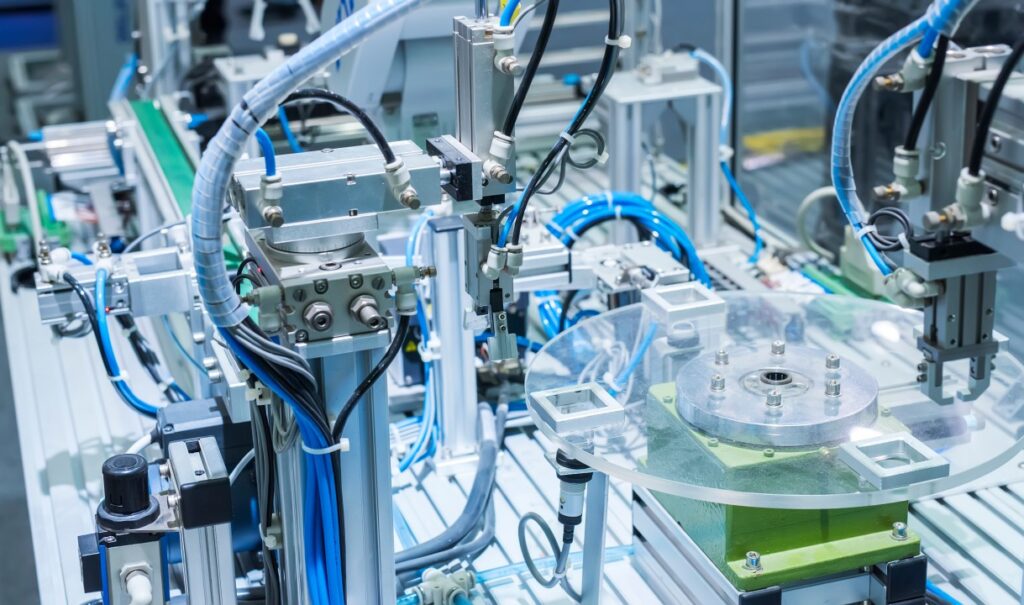APPLICATIONS OF PNEUMATICS IN MANUFACTURING AND AUTOMATION
Applications of Pneumatics in Manufacturing and Automation
Pneumatics, a branch of fluid power, has played a crucial role in various industries, particularly in manufacturing and automation. Pneumatic systems use compressed air to transmit and control energy, making them versatile and efficient. This article explores the key applications of pneumatics in manufacturing and automation, highlighting their advantages and versatility.
1. Actuators and Motion Control
Pneumatic actuators are widely used for precise and efficient motion control in manufacturing and automation. These devices convert compressed air into mechanical motion, allowing for precise positioning and rapid response. They are used in tasks such as conveyor belt control, valve actuation, robotic arm movement, and more.
2. Material Handling
Pneumatic systems are essential in material handling applications. They power conveyor systems, lift and transfer equipment, and sorting mechanisms. The reliability and flexibility of pneumatic systems make them ideal for tasks that involve moving and manipulating materials within manufacturing facilities.
3. Clamping and Gripping
In automated assembly and machining processes, clamping and gripping components are crucial. Pneumatic clamps and grippers provide the necessary force to securely hold workpieces in place during operations. They are known for their speed and precision, contributing to higher production efficiency.
4. Presses and Stamping
Pneumatic presses and stamping machines are used in metalworking, plastic molding, and other industries. They deliver consistent force and can be precisely controlled, ensuring accurate and repeatable operations. Pneumatics is preferred for applications where high force and rapid cycles are required.
5. Air Quality Control
Maintaining clean and dry compressed air is vital in manufacturing and automation to prevent damage to equipment and ensure consistent operation. Pneumatic systems incorporate air treatment components like filters, regulators, and lubricators (FRLs) to maintain the required air quality.
6. Safety Systems
Pneumatic systems are commonly used in safety applications, such as emergency stops and interlocking mechanisms. They offer quick response times, ensuring rapid shutdown or activation when needed, enhancing workplace safety.
7. Robotic Automation
Pneumatics plays a pivotal role in robotic automation. Compressed air powers robotic arms and end-effectors, providing the strength and agility required for various tasks, from material handling to welding and assembly.
8. Sealing and Packaging
Pneumatic devices are used for sealing and packaging processes in manufacturing. They control the movement of packaging materials, facilitate sealing operations, and ensure products are properly packaged and labeled.
9. Automation in Hazardous Environments
In environments where electrical systems might pose safety risks, pneumatic systems are preferred due to their intrinsically safe nature. They can operate in explosive or flammable atmospheres without the risk of sparking.
10. Energy Efficiency
Pneumatics is known for its energy efficiency. By utilizing compressed air as a power source, it reduces the need for electrical energy in various manufacturing and automation processes, contributing to cost savings and sustainability.
11. Remote Operation
Pneumatic systems are well-suited for remote or inaccessible locations due to their simple design and ease of installation. This makes them valuable in applications such as offshore drilling, mining, and remote monitoring.
12. Customization and Scalability
Pneumatic systems can be easily customized and scaled to meet specific manufacturing and automation requirements. This adaptability makes them a preferred choice for industries with evolving needs.
In conclusion, pneumatics is an indispensable technology in manufacturing and automation. Its versatility, reliability, and efficiency make it suitable for a wide range of applications, from motion control to material handling and safety systems. As industries continue to advance, pneumatics will remain a vital component of the automation landscape.


